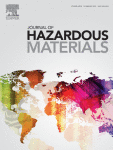Ver ítem
- xmlui.general.dspace_homeCentros Regionales y EEAsCentro Regional Buenos Aires SurEEA BarrowArtículos científicosxmlui.ArtifactBrowser.ItemViewer.trail
- Inicio
- Centros Regionales y EEAs
- Centro Regional Buenos Aires Sur
- EEA Barrow
- Artículos científicos
- Ver ítem
Developing a glyphosate-bioremediation strategy using plants and actinobacteria: potential improvement of a riparian environment
Resumen
Glyphosate (Gly) and its principal degradation product, the aminomethylphosphonic acid (AMPA) were found in soils from a riparian environment in Argentina. Sixty-five actinobacteria were isolated from these soils, rhizosphere, and plants (Festuca arundinacea and Salix fragilis). The isolate Streptomyces sp. S5 was selected to be used as bioinoculant in a greenhouse test, in which plants, actinobacteria, and their combinations were assessed to bioremediate
[ver mas...]
Glyphosate (Gly) and its principal degradation product, the aminomethylphosphonic acid (AMPA) were found in soils from a riparian environment in Argentina. Sixty-five actinobacteria were isolated from these soils, rhizosphere, and plants (Festuca arundinacea and Salix fragilis). The isolate Streptomyces sp. S5 was selected to be used as bioinoculant in a greenhouse test, in which plants, actinobacteria, and their combinations were assessed to bioremediate the riparian soil. The dissipation of both compounds were estimated. All treatments dissipated similarly the Gly, reaching 87-92% of dissipation. AMPA, dissipation of 38% and 42% were obtained by Salix and Festuca, respectively, while they increased to 57% and 70% when the actinobacterium was added to each planted system. Regarding the total dissipation, the higher efficiencies for both compounds were achieved by the non-planted soils bioaugmented with the actinobacterium, with 91% of Gly dissipated and 56% for AMPA. According to our study, it could be suggested which strategy could be applied depending on the bioremediation type needed. If in situ bioremediation is necessary, the combination of phytoremediation and actinobacteria bioaugmentation could be convenient. On the other hand, if ex situ bioremediation is needed, the inoculation of the soil with an actinobacterium capable to dissipate Gly and AMPA could be the more efficient and easier alternative.
[Cerrar]

Autor
Giaccio, Gustavo Carlos María;
Saez, Juliana M.;
Estévez, María C.;
Salinas, Bárbara;
Corral, Raúl Alejandro;
De Geronimo, Eduardo;
Aparicio, Virginia Carolina;
Álvarez, Analía;
Fuente
Journal of Hazardous Materials : 130675 (Available online 25 December 2022)
Fecha
2022-12
Editorial
Elsevier
ISSN
0304-3894
1873-3336
1873-3336
Documentos Relacionados
Formato
pdf
Tipo de documento
artículo
Proyectos
(ver más)
INTA/2019-PD-E2-I039-002/2019-PD-E2-I039-002/AR./REMEDIACIÓN DE SUELOS Y AGUAS Y RESTAURACIÓN ECOLÓGICA DE SISTEMAS DEGRADADOS POR USO AGROPECUARIO, AGROINDUSTRIAL Y ACTIVIDADES EXTRACTIVAS
Palabras Claves
Derechos de acceso
Embargado
 Excepto donde se diga explicitamente, este item se publica bajo la siguiente descripción: Creative Commons Attribution-NonCommercial-ShareAlike 2.5 Unported (CC BY-NC-SA 2.5)
Excepto donde se diga explicitamente, este item se publica bajo la siguiente descripción: Creative Commons Attribution-NonCommercial-ShareAlike 2.5 Unported (CC BY-NC-SA 2.5)

